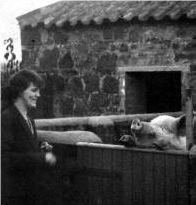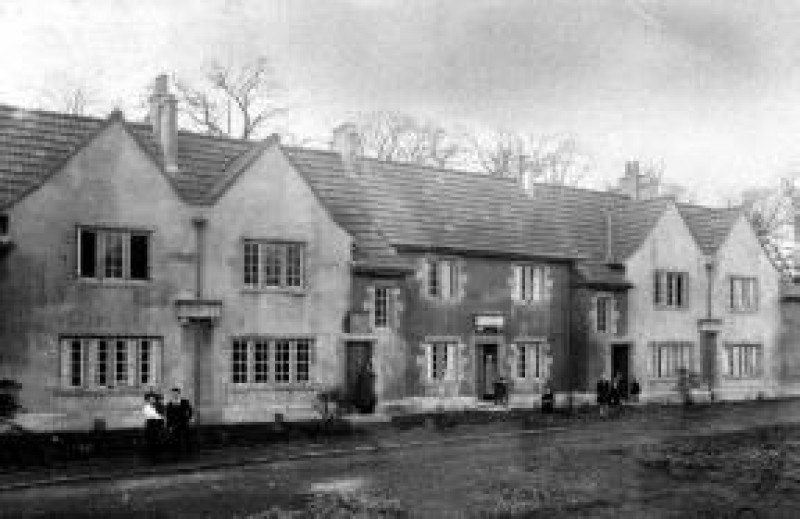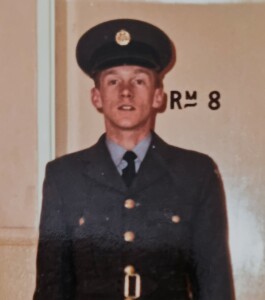Veterans Housing Scotland was formed from the Scottish Veterans Garden City Association (SVGCA) and Scottish Garden City Housing Society (SGCHS). Both organisations were established during the First World War to provide homes for heroes returning with disabling injuries.
The charity adopted the Garden City concept to honour the sacrifices of ex-servicemen and their service to the nation. This concept aimed to offer a bright future in a good home and work opportunities, either in their backyard or the local community.
 The first development in Longniddry was a self-sufficient community with a piggery, beehives, and a community hall. Although the concept was rich in intent, it was unsuccessful beyond Longniddry due to financial costs.
The first development in Longniddry was a self-sufficient community with a piggery, beehives, and a community hall. Although the concept was rich in intent, it was unsuccessful beyond Longniddry due to financial costs.
Towns and cities across Scotland wanted to set up similar schemes under the Association's banner as publicity grew. An article from the Scotsman on 10 November 1915 stated: "A bare outline of the scheme shows that the proposal is well-conceived and skillfully planned. The Association will work through a Central Council, but each area will be a self-controlled, self-administering unit. The funds will not be pooled, and each area will raise the money for its scheme. The Local Committee will expend the District Funds on the care of its men."
SVGCA made one of the most impressive contributions of any voluntary housing body in Scotland during the inter-war period.
The Christian Salvesen family has been closely involved since the charity's formation. Christian Salvesen's son, Edward Theodore, was the first elected Chairman of SVGCA. Lady Salvesen chaired the Ladies Committee, which raised funds to build five cottages at Liberton, Edinburgh, in 1926. Before Lord Salvesen died in 1942, he oversaw the construction of 220 cottages and formed over 15 District Committees. In 1946, the Salvesen family funded the construction of 20 houses in Salvesen, Edinburgh.
The charity has a long history with the Royal Family. We were honoured to have the late HM the Queen as our Patron. Her Majesty visited our homes in Edinburgh in 2007 and 2015. In 2024, we were honoured to welcome HRH The Princess Royal as our Patron
The spirit of comradeship and sense of belonging in a community of like-minded people who have served their country and shared similar experiences provides valuable peer support.
Houses for Heroes
Despite the Association's record of providing affordable rented housing for almost 600 ex-servicemen and women and their families in Scotland, more needed to be done. After 90 years, the Association's total of 594 houses, with turnover averaging only 30% per year and an average occupancy of 99%, was insufficient to meet the needs of over 400 veterans on a waiting list.
The Houses for Heroes Appeal was launched in 2009 to provide 60 new houses across Scotland. By 2019, 42 new homes had been constructed, with plans for 18 more. Additionally, 11 houses were built on a shared equity basis, with six more planned.
The Association's initiative to introduce a nomination rights scheme in Scotland is progressing well with local authorities and other housing providers. Six houses have been provided in East Lothian. In 2023, the charity launched its 25 by 2025 campaign to offer more nomination rights properties.
The progress made by the Association since its formation in 1915 has been significant. It has paved the way for the next phase of its history and the future development of its work to become Scotland's leading military charity provider of homes for disabled veterans.
Veterans Housing Scotland
As part of a rebranding exercise in September 2019, the Association adopted Veterans Housing Scotland as its operational name.
Community development is essential for the future success of Veterans Housing Scotland. Its strategic priorities include building lives and communities and supporting the ethos of 'community within a community' across Scotland.
Veterans Housing Scotland, working in partnership with other support organisations, aims to provide an enhanced well-being support package tailored to the individual needs of our beneficiaries and their families.


